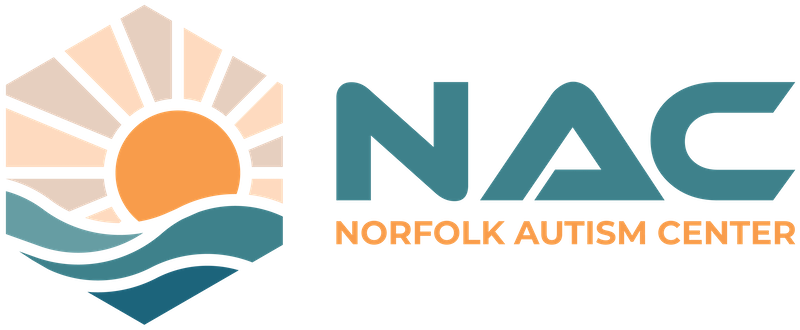Choosing the right autism treatment center for your child can be one of the most significant—and often overwhelming—decisions you will make as a parent. Not only are there countless treatment philosophies and models, but each child has unique needs and developmental milestones, making the process both deeply personal and occasionally daunting. Parents frequently wonder: Which approach will best support my child’s growth? What kind of environment will encourage learning? How can I find compassionate professionals who truly listen?
This guide aims to simplify some of these challenging decisions by identifying the core elements that define a high-quality autism treatment center. Throughout these pages, you’ll discover what to look for, questions to ask, and ways you can determine whether a center’s philosophy aligns with your family’s values. You’ll also learn why a blend of evidence-based practices—particularly Applied Behavior Analysis (ABA)—and a child-led, compassionate approach can be a powerful model for supporting children on the autism spectrum.
By the end of this article, you should feel more confident recognizing the indicators of an exceptional treatment center. And if you’re still unsure of the next steps, you can always reach out to discuss how you and your child’s needs can be met by professionals committed to a supportive, positive environment.
Understanding the Overwhelm: Why This Choice Matters
When you realize your child may benefit from specialized support, the sheer volume of advice, recommendations, and online resources can feel paralyzing. You want your child to receive the best possible care but may not know where to start. It can help to break down the process into key factors:
- Treatment Philosophy and Methodology – What therapy approaches do they use? Is it evidence-based?
- Staff Qualifications and Experience – Do they employ Board Certified Behavior Analysts (BCBAs) and Registered Behavior Technicians (RBTs)? Do they have multidisciplinary team members?
- Environment and Culture – Is the center’s atmosphere inviting, inclusive, and safe?
- Family Involvement and Communication – How are parents integrated into the therapy process?
- Individualized Plans and Child-Led Goals – How do they tailor each child’s treatment to their specific abilities, challenges, and interests?
These considerations ensure your child’s therapy journey is productive and grounded in research while still respecting their individual preferences. Ultimately, this balance—between clinically rigorous methodology and deep respect for each child’s personality—is the hallmark of a truly effective autism treatment center.

Choosing the right autism treatment center for your child can be one of the most significant—and often overwhelming—decisions you will make as a parent
The Foundation: Evidence-Based ABA Therapy With a Child-Led Spirit
In the world of autism treatment, ABA (Applied Behavior Analysis) is widely recognized as one of the most extensively researched and validated therapies. It leverages data and structured techniques to help children develop life skills, improve communication, and reduce behaviors that may interfere with learning. However, the way ABA is delivered matters.
A center that practices compassionate, child-led ABA combines the scientific rigor of traditional ABA with the flexibility and personalization that many children need. This approach respects the child’s autonomy, interests, and emotional well-being. For instance, instead of forcing a child to follow an activity they find upsetting or overwhelming, a child-led approach modifies tasks and methodologies to match the child’s comfort level and innate curiosity. The therapy then naturally becomes more motivating, resulting in more effective outcomes.
When seeking a center, parents should confirm that:
- ABA is delivered by qualified professionals – Board Certified Behavior Analysts (BCBAs) design and oversee treatment plans, while Registered Behavior Technicians (RBTs) often implement day-to-day therapy.
- Therapy sessions incorporate a gentle, child-led emphasis – This ensures that sessions blend structure and spontaneity, reinforcing new skills in a supportive environment.
This balance between robust, data-driven methods and respectful responsiveness to the child’s cues is especially beneficial. It fosters both skill acquisition and a positive emotional bond with the learning process.
Essential Qualities of a High-Quality Treatment Center
1. Clear and Transparent Credentials
When you first start contacting treatment centers, inquire about their credentials. Look for:
- Board Certified Behavior Analysts (BCBAs) on staff who are responsible for developing and adjusting treatment plans.
- Registered Behavior Technicians (RBTs) or other qualified therapists who handle the daily implementation of these plans under BCBA supervision.
- Ongoing Professional Development opportunities for staff—this shows a commitment to staying current with the latest research and evolving best practices.
Example Question to Ask:
“How do you ensure your staff remains up-to-date on the latest ABA research and child development information?”
A center that prioritizes professional growth might discuss in-house training, continuing education seminars, or mentorship programs that help build a supportive community of learning.
Red Flags:
- Vague or dismissive responses about staff qualifications.
- Reluctance to share who will be working directly with your child.
2. A Proven, Evidence-Based Methodology
Consider how the center measures progress and develops treatment goals:
- Data Collection and Goal Tracking: Centers that rely on ABA should track observable behaviors methodically, using data to tailor each child’s goals.
- Individualized Treatment Plans: Your child is unique, so their treatment plan should be as well. Goals must be relevant to your child’s needs—like improving communication, social skills, self-help abilities, or emotional regulation.
- Child-Led Structure: Look for flexibility in program design and session structure. Therapy should adapt to your child’s interests, strengths, and comfort levels, rather than forcing them into a one-size-fits-all model.
Example Question to Ask:
“Can you describe how you determine and update treatment goals for each child?”
A knowledgeable center will explain how they gather data, involve parents, and adjust plans based on ongoing assessments.
Red Flags:
- Centers that use the same goals for every child.
- Lack of specific examples or a refusal to share details of how they measure progress.
3. Family Involvement and Support
Family involvement is crucial in any effective autism treatment plan. Parents and caregivers offer invaluable insights into a child’s behavior outside the clinic. Collaboration between families and therapists ensures that newly acquired skills generalize into home and community settings.
What to Look For:
- Regular Progress Meetings: Frequent check-ins allow parents to ask questions, provide feedback, and share updates on how the child is doing outside the center.
- Parent Training and Education: High-quality centers offer workshops, individualized coaching, or resources to help parents support their child’s goals at home.
- Open Communication Channels: Therapists and staff should be responsive to parent inquiries and readily share information about each session’s highlights, challenges, and achievements.
Example Question to Ask:
“How do you involve parents in the therapy process?”
Look for signs of a robust and meaningful collaboration, such as scheduled parent training sessions, daily or weekly reports, and opportunities to observe therapy or participate in activities.
Red Flags:
- You feel excluded from decisions about your child’s goals or interventions.
- Communication is infrequent, unhelpful, or nonexistent.
4. A Positive, Supportive Environment
The physical and emotional atmosphere of a treatment center can significantly influence a child’s comfort and willingness to engage. Look for indications that the center prioritizes a welcoming environment:
- Calm, Organized Spaces: Quiet, orderly therapy rooms help children focus, especially those sensitive to environmental stimuli.
- Age-Appropriate Resources: Materials, games, and activities should match your child’s developmental level and interests.
- Friendly, Attuned Staff: Therapists and administrative staff who greet children warmly set the stage for trusting relationships.
- Opportunities for Fun and Exploration: Children learn best when they feel comfortable and engaged. A well-appointed play or sensory area can help them relax and grow.
Example Question to Ask:
“Can I tour your facility to get a sense of the environment?”
A center that welcomes visits and proudly shows off their space usually has nothing to hide. They want you to see how children engage in structured play, skill-building tasks, and social interactions.
Red Flags:
- Disorganized or overwhelming clutter.
- Staff who appear rushed, disengaged, or disinterested in visitors.
Personalizing Your Child’s Journey
Perhaps the most critical indicator of a quality treatment center is how they tailor programs to each child. Personalization doesn’t just mean adjusting goals; it means recognizing the child’s entire landscape—temperament, interests, sensitivities, and family dynamics.
Individualized Treatment Plans
Each child has areas of strength and difficulty that vary across domains like communication, social interaction, or motor skills. To create a holistic plan, a center might:
- Conduct thorough initial assessments to understand each child’s developmental baseline and unique needs.
- Collaborate with parents, teachers, and sometimes other professionals (speech-language pathologists, occupational therapists, etc.) for well-rounded input.
- Set short-term and long-term goals that reflect the family’s priorities and the child’s readiness for particular skills.
Flexibility and Adaptation
Even the best-designed programs need to adapt as children grow and progress. A warm, compassionate team will notice when a child’s enthusiasm shifts or when certain goals have become too easy or too demanding.
Example Scenario:
If a child suddenly develops a keen interest in trains, a creative therapist might incorporate train sets or train-themed stories to maintain engagement during tasks. By meeting the child where they are, therapy sessions become more enjoyable and effective.
Ongoing Assessment
Quality centers continually gather data on a child’s progress. Parents should see charts, reports, or summaries illustrating how their child is developing across various skill areas. This transparent sharing of information promotes trust and helps families track milestones and celebrate successes, big or small.
The Importance of Qualified, Caring Staff
A center can boast top-notch methodology and a beautiful facility, but without a compassionate, highly trained team, those features don’t mean much. When evaluating staff:
- Professional Credentials: Ensure that those who design treatment plans are BCBAs or similarly qualified professionals.
- Experience with Diverse Needs: Ask about the center’s track record with children who share similar developmental profiles to your child.
- Warmth and Empathy: Observe how therapists speak to children and each other. A respectful, gentle tone fosters a positive learning environment.
- Consistency in Care: Find out if the same therapists will be working with your child regularly. Consistency builds rapport and trust, especially important for children who thrive on predictable routines.
Example Question to Ask:
“Will my child have a consistent team of therapists, or will staff members change frequently?”
A center that values continuity will do its best to keep the same team in place, allowing strong bonds to form and progress to continue smoothly.
Questions Every Parent Should Ask
Here’s a shortlist of specific questions to help guide your discussions with potential treatment centers. Consider how the answers resonate with your family’s values and your child’s needs:
- “How do you tailor ABA therapy to each child’s individual strengths and challenges?”
Look for centers that emphasize collaboration, data, and child-led adjustments. - “How do you handle situations where a child becomes overwhelmed or upset during a session?”
Quality care involves de-escalation techniques, empathy, and respect for the child’s emotional state. - “How are families involved in setting and reviewing treatment goals?”
Family input is essential for truly personalized plans. - “What is your approach to reinforcing positive behaviors versus addressing challenging ones?”
Evidence-based ABA typically involves positive reinforcement, so look for clarity on how they implement this strategy. - “How does your center transition children into less restrictive or more mainstream environments when they’re ready?”
Forward-thinking centers plan for future steps, be it school integration or community-based skill building. - “Can you share examples of your staff’s ongoing professional development or advanced ABA training?”
This signals a commitment to staying current with new research and best practices.
Red Flags to Watch For
While you’re researching and visiting centers, keep an eye out for these potential warning signs that may indicate lower-quality care:
- Lack of Transparency: Evasive answers about methods, staff qualifications, or data collection.
- Overemphasis on ‘Fixing’ the Child: Approaches that ignore a child’s emotional well-being or personal interests to focus solely on compliance.
- One-Size-Fits-All Plans: Treatment goals that don’t adjust to the child’s changing needs or unique personality.
- Minimal Family Involvement: If parents are not seen as essential partners, that’s a concern.
- Negative Atmosphere: Staff who appear stressed, rushed, or harsh can diminish the therapeutic environment.
Positive Indicators of Quality Care
Conversely, here are some green lights that suggest you’ve found a truly supportive center:
- Evidence of Empathy and Respect: Staff who speak to children kindly, respecting their autonomy and personal boundaries.
- Welcoming Environment: Inviting spaces for therapy sessions, play, and comfortable waiting areas for families.
- Structured Yet Flexible Sessions: A mix of planned activities and the freedom for kids to explore or guide the session’s direction.
- Data-Driven Adjustments: Therapists who can discuss recent data, progress, and how they plan to evolve the child’s goals.
- Sincere Efforts to Involve Families: Regular meetings, training sessions, and open communication channels.
How One Center’s Approach Exemplifies These Best Practices
When you come across a center that blends data-driven ABA techniques with genuine respect for each child’s interests, you’ll likely see these hallmarks in action. Staff members might share stories of how they modified a behavioral goal to reflect a child’s sudden fascination with dinosaurs, or how they paused a session to help a child self-regulate through sensory play.
Another key indicator is when staff welcome parental input. You might hear about how a child’s love for certain songs at home helped them develop language skills during therapy, or how parents received coaching on mealtime routines that generalized the child’s mealtime success from the center to home.
At a truly child-centered facility, every aspect of care—from the initial intake to daily therapy sessions—shows a willingness to adapt, learn, and grow with the child. The end result is a nurturing environment that builds essential life skills while honoring the unique individuality of each child.
Taking the Next Step
As you navigate this journey, remember that you are your child’s best advocate. You know them intimately—what lights them up, what calms them down, and which kinds of experiences spark their growth. A high-quality treatment center will listen closely to your insights, valuing your expertise as much as their own clinical knowledge.
If you still have unanswered questions or want to see how child-led ABA and a supportive environment can transform your child’s developmental journey, reach out for more information. Sometimes, a conversation with a dedicated team member can ease the uncertainty, giving you a glimpse into how your child might thrive under compassionate, specialized care.
Call to Action
For families who want to learn more about a child-led, evidence-based approach to autism care, contact Norfolk Autism Center at (757) 777-3229 or visit us at 152 Burnetts Way, Suffolk, VA 23434. We welcome you to see firsthand how our therapeutic environment, caring staff, and personalized plans can be the bridge between where your child is now and the goals you envision for their future.




